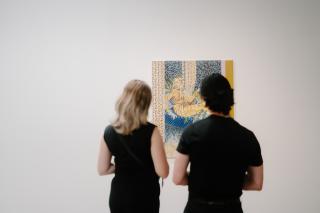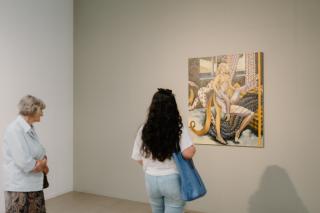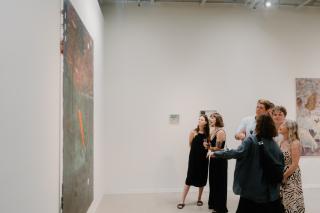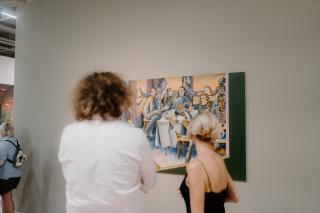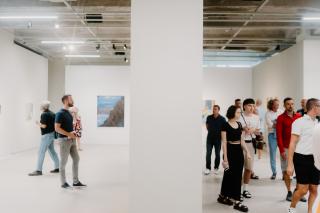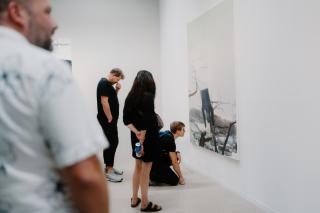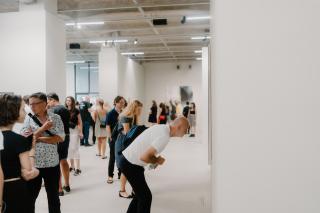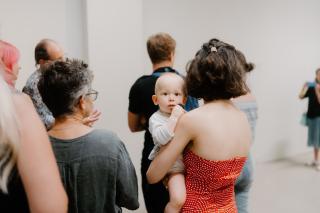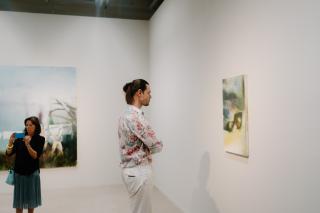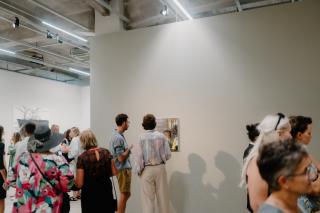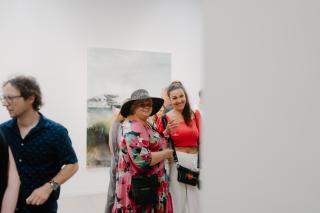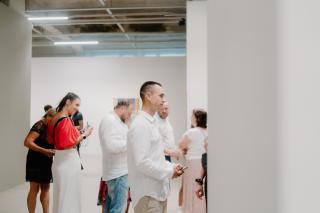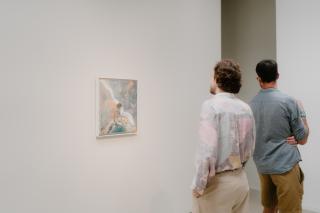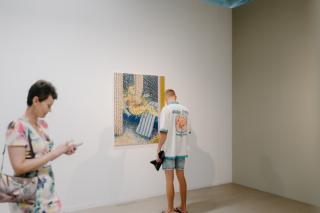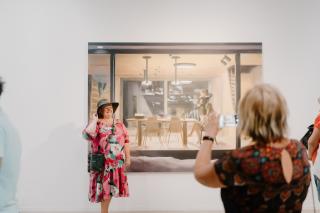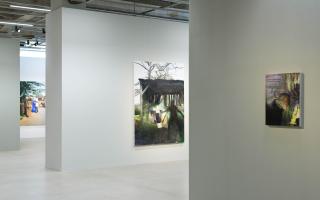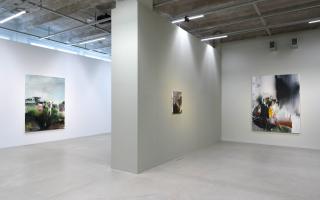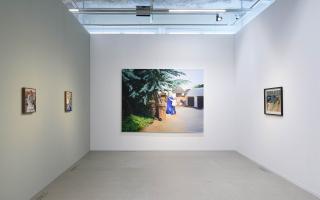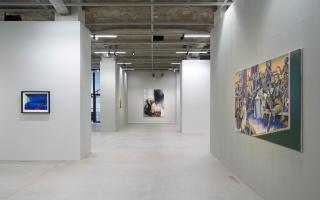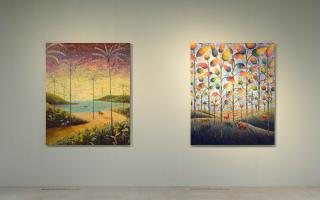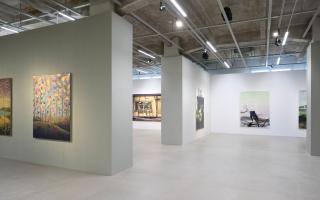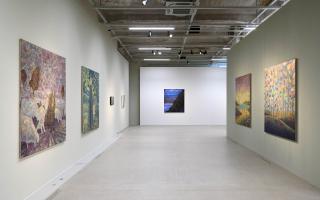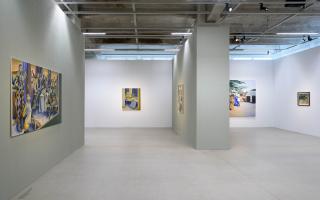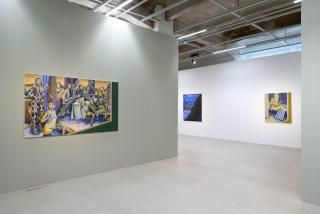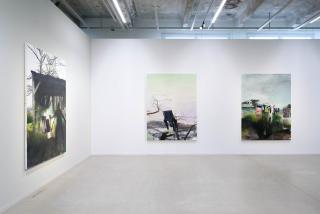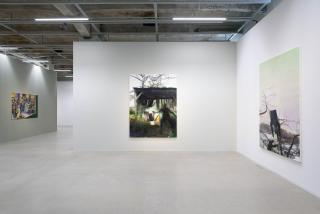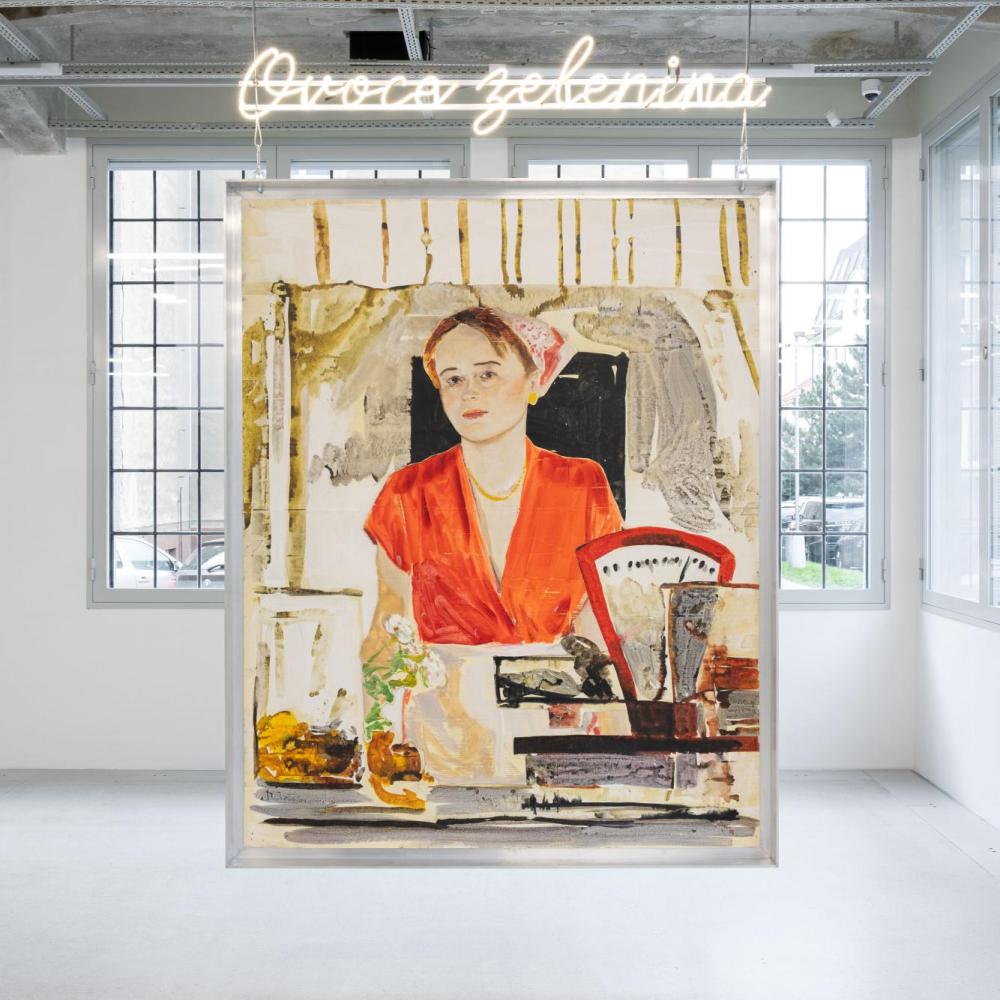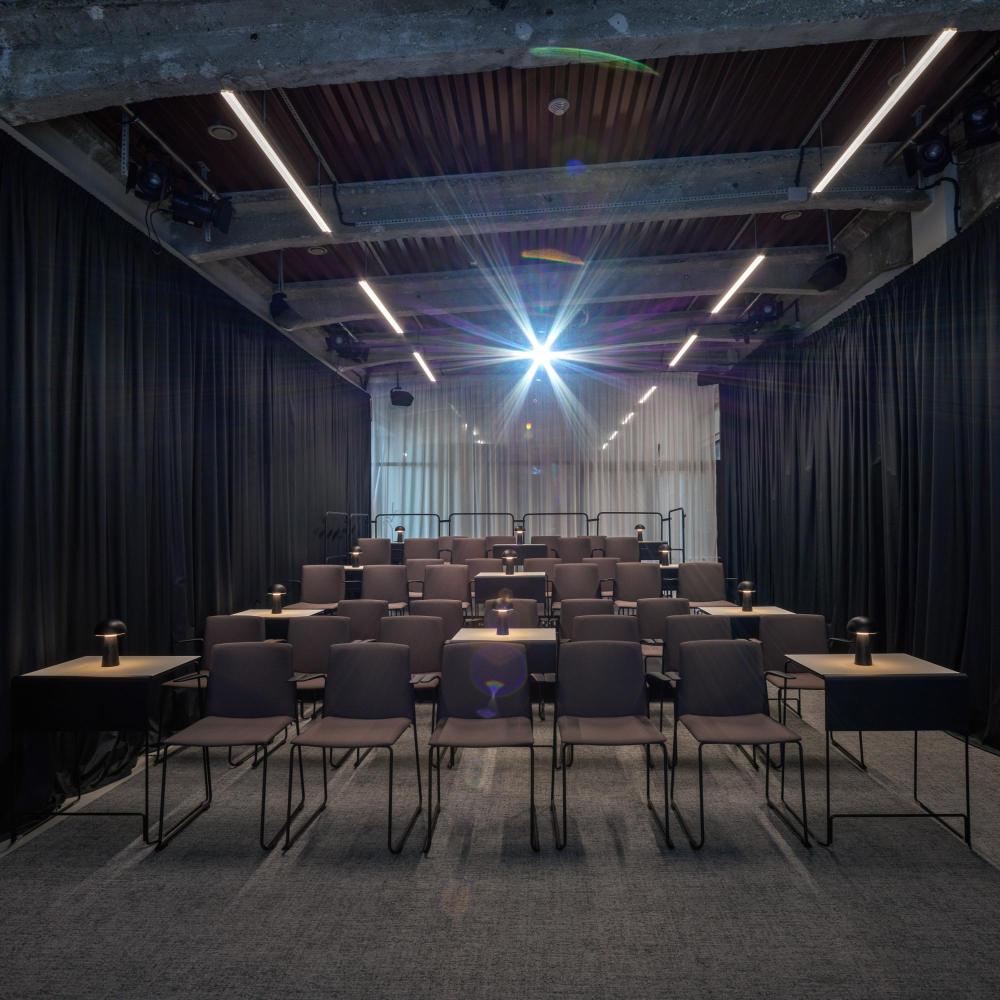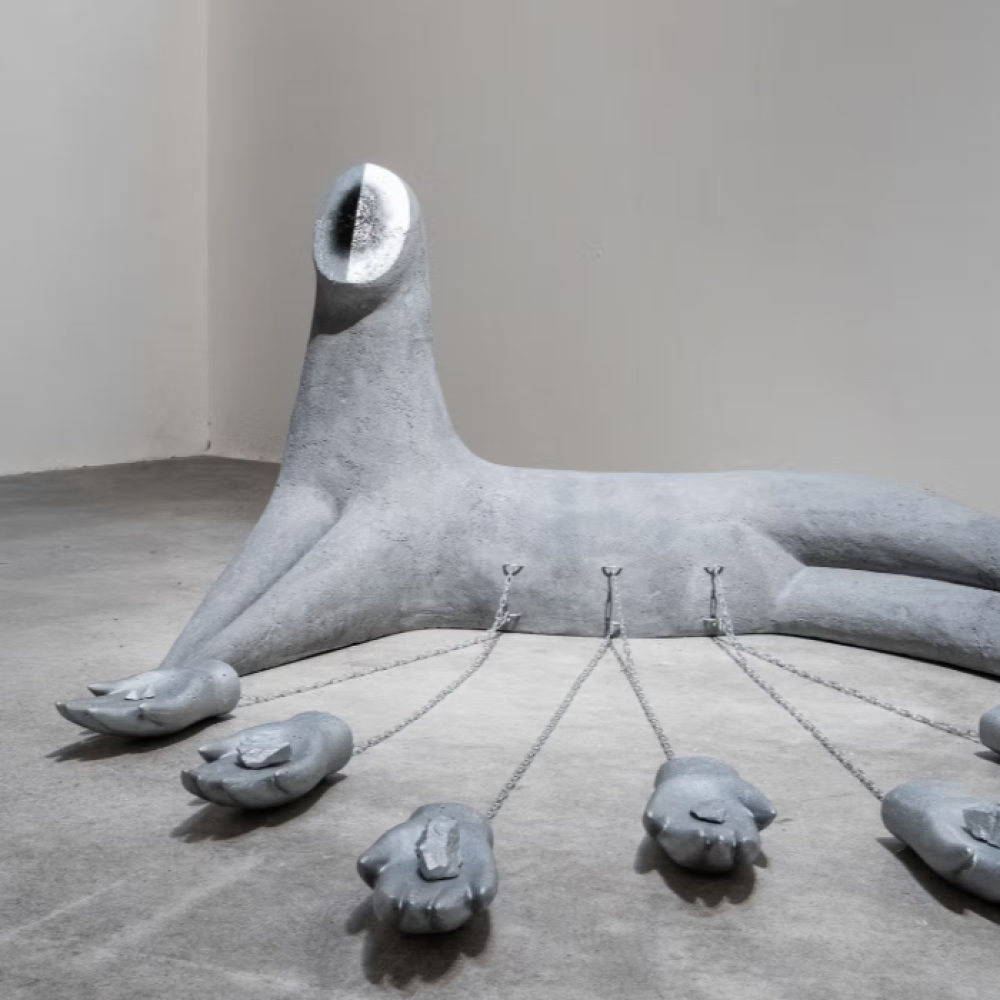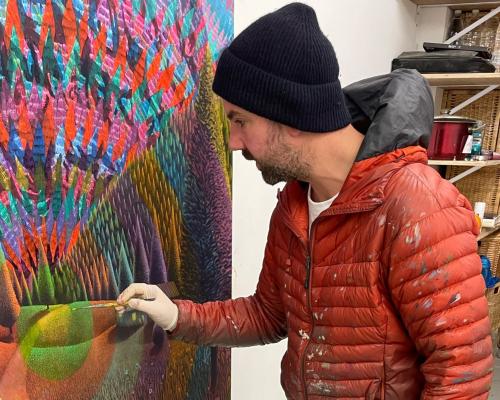
David Brian Smith (1981) comes from Wolverhampton, where he began his artistic education. He then continued his studies at Chelsea College of Art and Design in London. He has had numerous exhibitions across Europe, and in 2023 he expanded his work beyond the continent, specifically to India.
Smith's paintings are filled with a range of symbols, of which the figure of the shepherd, often with his head melancholically bowed, is perhaps the most powerful. The symbolism in the paintings is complemented by the unconventional colouring of the objects, which borders on the psychedelic quality of the subjects. In addition, the artist equips the paintings with other hidden symbols - written text is often hidden under the layer of colour. A great inspiration for Smith are the materials that surrounded him during his childhood - these are reflected in a certain way in the structure of his paintings, again contrasting with materials such as gold leaf.
Let me start with a question that relates to your work in general. What inspires the colourfulness of your work?
I have always been interested in colour. I believe the way I use and approach colour began at Shrewsbury College in the late 90s. I would collect and use, any paint I could get my hands on. Acrylic, enamel, household paint, spray paint, and oil paint. It didn’t matter, and perhaps because I was using paint which had been thrown out or given to me, I amassed a wide range of colours and used them together. I was fearless and painted until the piece made sense to me. Once this connection was made to colour, research into colour became more conscious and a consistent aspect of my practice.
It's common knowledge that you often refer to childhood memories in your paintings. I would like to ask whether you depict scenes on your canvases or whether your canvases have a story?
I want to create a world, which the viewer can inhabit. Maybe because my urban life in Hackney, London, is such a contrast to the farm I grew up on, in rural England. I make landscape paintings that I would like to step into. I suppose my painted landscapes become a stage for the figures and animals, to act out a narrative.
Another word that often comes up in connection with your name is patterns. Is repetition important to you in your work?
The patterns in my work are a feature of my paintings which people often mention. For me, I arrived at the way I work through thousands of hours of painting. Styles develop over time. I used to repeat the use of certain “trusted compositions”. Like both the shepherd and ant hill paintings, which both have been painted over 10 times. I am not taking that approach these days. I want to see unfamiliar places and new compositions.
The following question may sound a bit unprofessional, but I wonder who you think David Brian Smith is? And what does he bring out of himself in his work?
My work has been full of autobiographical references for many years. My paintings have journeyed through dark periods, such as my show Portrait of a Farm at Carl Freedman Gallery in 2015. I am currently in a lighter, more playful place. My work dictates my mood in the real world. When I feel things are going well in the studio, I am more content in life. When I’m struggling to unlock a painting, that frustration anchors itself in my mind.
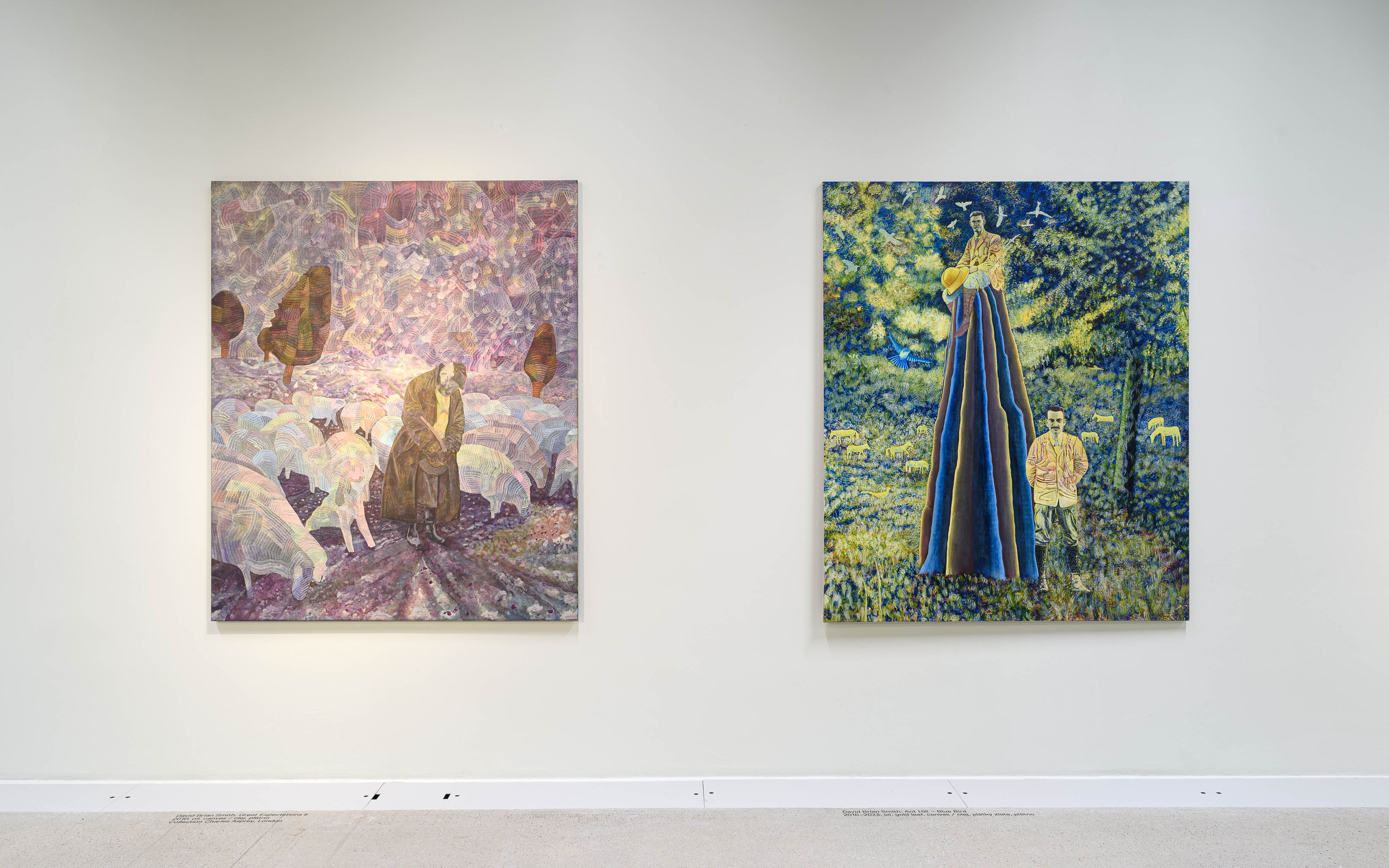
I asked the previous question because your works are made up of imaginary landscapes. What is the process of creating such landscapes?
I work from source material, photographs. I don’t really think about my paintings as being imagined landscapes. My painting process takes the painting forward and back. I paint elements in, some stay, many are painted over. The painting slowly grows and over time, I begin to see a harmony in the palette and arrive at a settled composition.
Imagination – often linked to your feelings – is an important part of your work. What feelings do the four paintings in the Telegraph Gallery evoke in you?
They all feel finished to me and form part of my story.
Your works have quite a strong concept behind them – you can even tell that you are using canvases that are typical of the British countryside. Is that true? Is the conceptual level of painting important to you?
Yes, it is true that I paint on Herringbone linen, initially because it reminded me of tweed flat caps, that my father used to wear. But I quickly found that I really enjoyed painting on the material. It can take a lot of paint. I like the impression of the weave which remains after months of painting on it. The material does everything I want it to do. I am aware that it has become a desirable part of my paintings to some. Aside from the material, I don’t believe my paintings would be different if I didn’t paint on Herringbone linen.
What prompted you to pursue the study of art?
When I left school with an E in my Art GCSE and very few other grades, I knew I wanted to study art. It’s difficult to explain in retrospect. My mum was very supportive which was so important. When I started painting, I knew I couldn’t get that feeling from anything else. Every emotion, a feeling of safety and a challenge that at times, I would like to (know?) how a mountaineer feels when they conquer a peak.
I have another question that I ask all the painters exhibiting in the New Positions in British Painting exhibition. What does figurative painting mean to you?
Figures are signifiers, the viewer's eye is taken by figurative elements in a painting. Subjectively speaking, I don’t want my figures to distract you from the rest of the painting. Representing life in an artwork is a very personal artistic decision. I don’t really know what other artists want to achieve, but I hope the representational tropes in my paintings help people to look, get lost, and explore.
And last but not least – can you tell us what's next for you?
I am making paintings for Galerie Isa, Mumbai. They will be exhibited at the India Art Fair, Delhi in February 2024. I have a solo exhibition at Althuis Hofland Gallery, Amsterdam in April 2024. I have a solo show at Asia Art Center, Taipei in November 2024.
